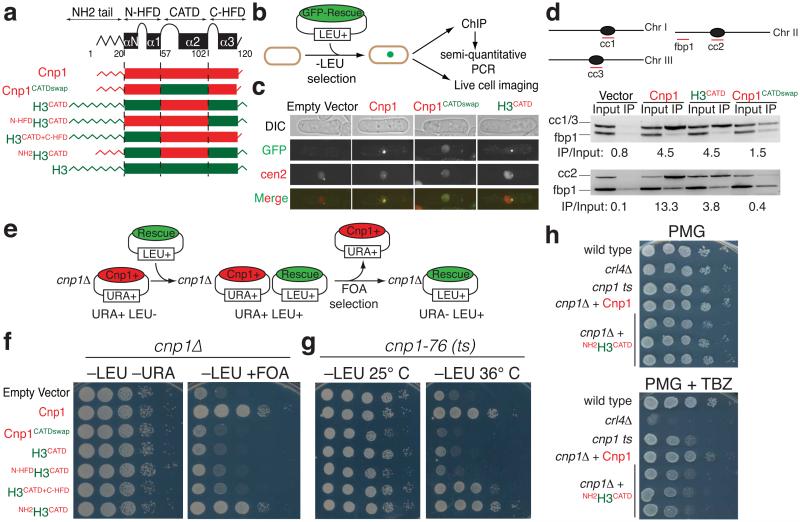Figure 7.
The fission yeast CATD is necessary and sufficient for centromere identity, but requires addition of the CENP-ACnp1 amino-terminus to provide long-term centromere function. (a,b) Schematic of (a) the CENP-Acnp1-histone H3 gene constructs and (b) experimental approach used to test maintenance of centromere position and function in the fission yeast S. pombe. CENP-ACnp1 domains are red; H3 in green. (c) Representative live cell imaging of GFP-tagged constructs as outlined in (b). Positions of centromere of chromosome 2 was marked by binding of a tetR-tomato fusion protein to a tetO array inserted at the central core of cen263. (d) Chromatin immuno-precipitation using GFP antibody of cells from (b). Wild type cells were transformed with GFP-tagged constructs as indicated. Enrichment at centromeric central cores (cc1-3 and cc2 products) was compared with input DNA relative to the control non-centromeric locus fbp1. The depiction of fission yeast chromosomes is not drawn to scale. (e) Schematic of plasmid shuffling assay for testing CENP-ACnp1 rescue constructs in cnp1Δ cells. (f,g) Rescue experiment of cnp1Δ cells using the plasmid-shuffling assay outlined in (e) or of cnp1-76 cells. (h) Serial dilution of cnp1Δ cells containing NH2H3CATD or CENP-ACnp1 as the unique source of CENP-ACnp1. Growth was assayed in pombe minimal medium with glutamate (PMG) with or without the addition of spindle poison drugs thiabendazole (TBZ) (15µg/ml). Wild type, clr4Δ (heterochromatin defective mutant) and cnp1-ts controls are also shown. In (f, g, h), a ten-fold dilution series is shown for each strain.

